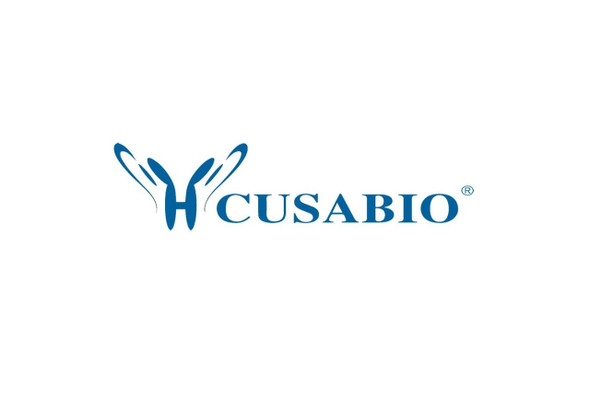Cusabio Human Recombinants
Recombinant Human Parathyroid hormone-related protein (PTHLH), partial | CSB-EP018991HU
- SKU:
- CSB-EP018991HU
- Availability:
- 13 - 23 Working Days
Description
Recombinant Human Parathyroid hormone-related protein (PTHLH), partial | CSB-EP018991HU | Cusabio
Alternative Name(s): Parathyroid hormone-like protein ;PLP
Gene Names: PTHLH
Research Areas: Signal Transduction
Organism: Homo sapiens (Human)
AA Sequence: AVSEHQLLHDKGKSIQDLRRRFFLHHLIAEIHTAEIRATSEVSPNSKPSPNTKNHPVRFGSDDEGRYLTQETNKVETYKEQPLKTPGKKKKGKPGKRKEQEKKKRRTRSAWLDSGVTGSGLEGDHLSDTSTTSLELDSR
Source: E.coli
Tag Info: N-terminal 6xHis-tagged
Expression Region: 37-175aa
Sequence Info: Partial
MW: 19.7 kDa
Purity: Greater than 90% as determined by SDS-PAGE.
Relevance: Neuroendocrine peptide which is a critical regulator of cellular and organ growth, development, migration, differentiation and survival and of epithelial calcium ion transport. Regulates endochondral bone development and epithelial-mesenchymal interactions during the formation of the mammary glands and teeth. Required for skeletal homeostasis. Promotes mammary mesenchyme differentiation and bud outgrowth by modulating mesenchymal cell responsiveness to BMPs. Upregulates BMPR1A expression in the mammary mesenchyme and this increases the sensitivity of these cells to BMPs and allows th to respond to BMP4 in a paracrine and/or autocrine fashion. BMP4 signaling in the mesenchyme, in turn, triggers epithelial outgrowth and augments MSX2 expression, which causes the mammary mesenchyme to inhibit hair follicle formation within the nipple sheath . Promotes colon cancer cell migration and invasion in an integrin alpha-6/beta-1-dependent manner through activation of Rac1.1 Publication
Reference: A parathyroid hormone-related protein implicated in malignant hypercalcemia cloning and expression.Suva L.J., Winslow G.A., Wettenhall R.E.H., Hammonds R.G., Moseley J.M., Diefenbach-Jagger H., Rodda C.P., Kemp B.E., Rodriguez H., Chen E.Y., Hudson P.J., Martin T.J., Wood W.I.Science 237:893-896(1987)
Storage: The shelf life is related to many factors, storage state, buffer ingredients, storage temperature and the stability of the protein itself. Generally, the shelf life of liquid form is 6 months at -20?/-80?. The shelf life of lyophilized form is 12 months at -20?/-80?.
Notes: Repeated freezing and thawing is not recommended. Store working aliquots at 4? for up to one week.
Function: Neuroendocrine peptide which is a critical regulator of cellular and organ growth, development, migration, differentiation and survival and of epithelial calcium ion transport. Regulates endochondral bone development and epithelial-mesenchymal interactions during the formation of the mammary glands and teeth. Required for skeletal homeostasis. Promotes mammary mesenchyme differentiation and bud outgrowth by modulating mesenchymal cell responsiveness to BMPs. Upregulates BMPR1A expression in the mammary mesenchyme and this increases the sensitivity of these cells to BMPs and allows them to respond to BMP4 in a paracrine and/or autocrine fashion. BMP4 signaling in the mesenchyme, in turn, triggers epithelial outgrowth and augments MSX2 expression, which causes the mammary mesenchyme to inhibit hair follicle formation within the nipple sheath (By similarity). Promotes colon cancer cell migration and invasion in an integrin alpha-6/beta-1-dependent manner through activation of Rac1.
Involvement in disease: Brachydactyly E2 (BDE2)
Subcellular Location: Cytoplasm, Nucleus, Secreted
Protein Families: Parathyroid hormone family
Tissue Specificity: Ubiquitous. Also expressed in the mammary gland.
Paythway:
Form: Liquid or Lyophilized powder
Buffer: If the delivery form is liquid, the default storage buffer is Tris/PBS-based buffer, 5%-50% glycerol. If the delivery form is lyophilized powder, the buffer before lyophilization is Tris/PBS-based buffer, 6% Trehalose, pH 8.0.
Reconstitution: We recommend that this vial be briefly centrifuged prior to opening to bring the contents to the bottom. Please reconstitute protein in deionized sterile water to a concentration of 0.1-1.0 mg/mL.We recommend to add 5-50% of glycerol (final concentration) and aliquot for long-term storage at -20?/-80?. Our default final concentration of glycerol is 50%. Customers could use it as reference.
Uniprot ID: P12272
HGNC Database Link: HGNC
UniGene Database Link: UniGene
KEGG Database Link: KEGG
STRING Database Link: STRING
OMIM Database Link: OMIM









